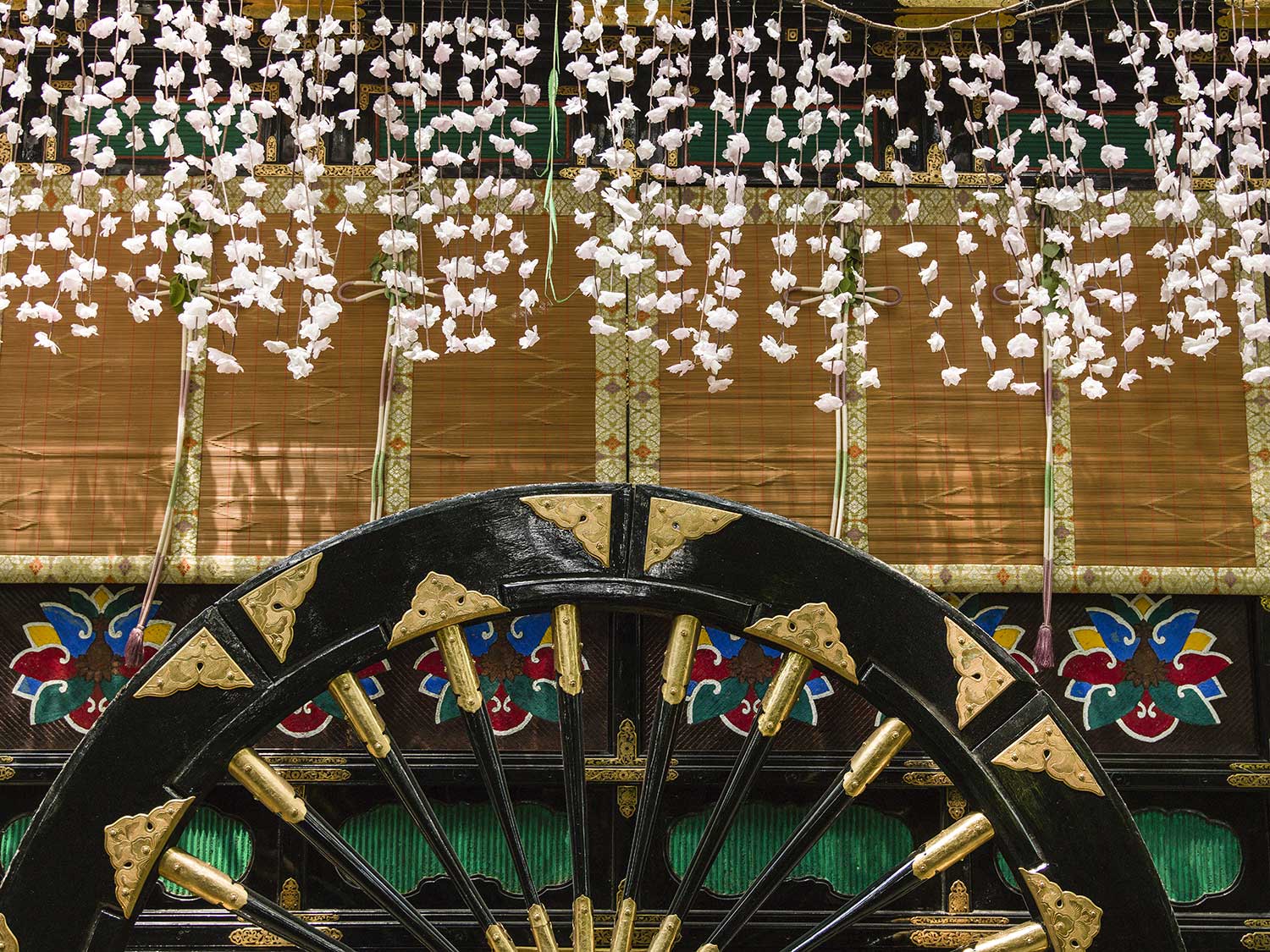

MASTER'S BOOK
JAPAN’S MOST EXCITING FESTIVALS
Almost every month, the Japanese calendar offers some festivals, known as Matsuri, characterised by incredible organisation and amazing atmosphere. Their tradition is connected with the religious requirement to invite divinities to joint celebrations and to commune with them during the most important holidays and events. Some Matsuri, for example those celebrating the changing seasons, are related to the natural rhythm of nature, which the Japanese joyously worship and ask for continued generosity. With the abundance of Japanese festivals, it is easy to encounter a colourful procession, regardless of the time of visit to the Country of Cherry Blossoms.
Aoi Matsuri – the Hollyhock Festival
According to ancient beliefs, hollyhock – aoi – was to protect the Japanese against natural disasters. It is celebrated on 15 May, with the festival carts decorated with hollyhock flowers and leaves. The parade participants are dressed in colourful dresses from the Heian era, and two figures stand out from the crowd. Saiō-Dai is a character of a young woman from the imperial family, who used to represent the Emperor during the Masturi celebrations. The Imperial Messenger opens the evnent by riding a horse down the streets of the city. Being over a millennium old, the Hollyhock Festival is one of the oldest such traditions in the world.
Bon Matsuri – a festival to honour the spirits of the dead
Bon or O-bon Matsuri, also referred to as the Lantern Festival, is a Buddhist custom to honour the spirits of the dead, and it falls between mid-July and mid-August, depending on the region. It is a time when the Japanese reminisce about their ancestors, visit their graves and make offerings in the form of sake or rice. The celebrations end with lanterns – tōrō-nagashi – being released into the waters of the sea, lakes and rivers. According to traditional beliefs, they are to help the spirits which come to the earth at that time to safely return to their faraway land.
Hakata Gion Yamakasa Matsuri
Early in the morning on 15 July, thousands of Japanese people, in teams representing the seven districts of Hakata, join a unique race to commemorate the events from before almost six centuries. The competitors run the race on a 5 km carrying portable Yamakasa temples, about 5 metres tall, weighing even a tonne. The history of the festival dates back to 1421, when the legendary founder of the temple Shontenji, carried on a special platform, sprinkled the streets of the city with holy water to cure it from mortal plague. In 2016, Hakata Gion Yamagasa Matsuri was entered on the UNESCO list of intangible cultural heritage.
Sapporo Yuki Matsuri
The Matsuri tradition also contributes to the development of new initiatives which permanently enter the Japanese calendar. Examples of more contemporary festival include Sapporo Yuki Matsuri, or the snow festival. Every year in the first weeks of February, the Ōdori avenue in the Susukino entertainment district and the Satorando park are filled with snow and ice sculptures, which take part in a competition initiated over half a century ago. The festival entries can be as tall as 15 metres, and made of even hundreds of tonnes of snow. The largest structures serve as settings for concerts, shows and special attractions for children.
Japan’s most popular festivals annually attract millions of citizens faithful to their tradition and tourists hungry for some exotic experience. Both the colourful parades, held consistently for hundreds of years, and the contemporary versions of Japanese Matsuri are inseparably connected with the rich tradition of the Country of Cherry Blossoms. So if you are planning a trip to Japan, remember to include at least one of the hundreds of vibrant festivals on your itinerary.























